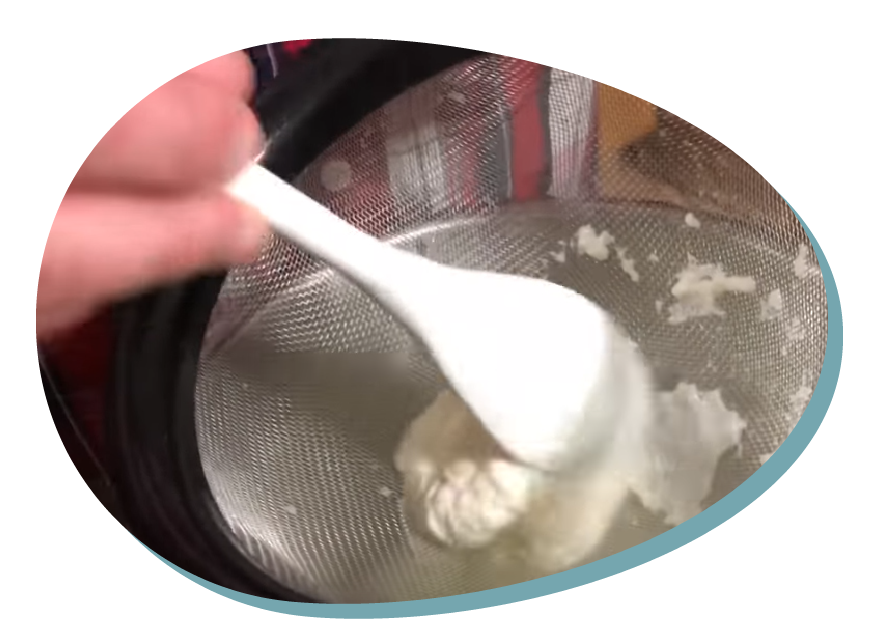Making Glue from milk
Type of resource: Video
Web address https://www.youtube.com/watch?v=Ju20QrGB55c&feature=youtu.be
Language: English
Description
Investigating how to make glue from milk.
Scientific concept introduced
Chemical reactions: chemical change.
Creative and critical thinking
Critical Thinking:
Analysis
Inductive reasoning
Creative Thinking:
Making
Mathematical reasoning
Measuring non-standard units
Sequencing
Scientific thinking
Observing
Questioning
Prediciting
Testing
Analysising
Recording
Drawing conclusions
Learning how to learn
Turn taking in groups
Self-efficacy in learning
Fun in learning
Additional
Oral language – listening and following instructions
Literacy – vocabulary development
Cooking skill of mixing and stirring
Collaborative skills of sharing and turn taking
Pre-reading skills – sequencing
Hand-eye coordination
Safety in the kitchen
Making Glue from milk
Overall aims
To enable pupils to explore the chemical reaction between different materials
To develop pupils’ skills in listening and following instructions
To develop pupils’ cooking skill of mixing and stirring
To develop pupils’ skills in observing and predicting
To develop pupils’ skills in sharing and turn-taking
To develop pupils’ skills in measuring
To develop pupils’ skills in recording
Vocabulary – keywords should be understood
Milk, dairy, vinegar, baking soda, curds, whey, glue, mix, stir, ingredients, mixture, lumpy
Expected learning outcomes (operational aims)
The child will be enabled to:
– follow instructions for making glue
– explore how water, vinegar, milk and baking soda react with one another
– separate milk into curds and whey
– practice the skill of stirring
– make observations about how ingredients react and change
– work together in small groups
– graphically record their results
STEM skills – to which the learning unit is related to
CORE STEM SKILLS
Asking questions
Observing and making predictions
Testing
Analyzing the results involved in the process of making glue
Recording
Making
Measuring
Drawing conclusions
ADDITIONAL SKILLS
Hand-eye coordination
Fine-motor skills
Writing
Reading
Oral Language
Cooking skills of stirring and mixing
Following rules of safety
Group work
Drawing
Teaching methodologies/activity outline
Teacher Note: Mixing milk and vinegar produces a chemical reaction that forms casein which is essentially a natural plastic. When a small amount of baking soda is added to the curd, the baking soda (base) and vinegar (acid) make an acid-base chemical reaction to produce carbon dioxide, water, and sodium acetate. The carbon dioxide bubbles escape but the sodium acetate solution combines with the casein curds to form a sticky glue.
Introduction
Inform pupils that they’re going to be making glue from milk today. Discuss ideas of ways in which they can use glue.
Ask pupils what ‘dairy’ food is – elicit that dairy is milk or food made from milk. Ask pupils in groups to list (draw) as many dairy foods they can think of and discuss as a class e.g. milk, cheese, yogurt, cream, ice-cream, butter. cottage cheese.
Activity
Ask pupils to work in groups to make their glue. Remind pupils to take turns in stirring and adding in the ingredients.
Ingredients
– 1 tbsp. white vinegar
– 1 ½ cups milk
– 1 tbsp. baking soda
– 1 tbsp. water
Instructions
1. Heat the milk in a saucepan over a low to medium heat but don’t boil it.
2. Add in the vinegar and stir well.
3. Continue to heat till curds begin to form. The milk will begin to separate into solid curds and watery whey.
4. Stir until the milk is well-separated.
5. Use a strainer or coffee filter to strain the mixture, draining the whey and keeping the curd, which is in the strainer/filter.
6. Add the curds back into the saucepan and add the water. Stir to mix and then add the baking soda.
7. Heat the mixture till it bubbles a little.
8. Stir until all the curds are well mixed with the water and baking soda.
Sample Question: What do you think would happen if you added more water/baking soda?
The thickness of the glue depends on the amount of water, so it can be either a sticky paste (little water) or a thin glue (with water). If the mixture is too thick, add a bit more water. If the glue is too lumpy, add more baking soda.
9. Leave to cool.
10. Now you’re ready to use your glue.
Unrefrigerated glue will ‘spoil’ after 24 to 48 hours. Dispose of the glue when it develops a spoiled milk smell.
Conclusion
Ask children draw a simple labelled diagram with arrows, to show the stages in the process of making glue from milk and the results. Then they can use their glue for arts and crafts.
Assessment of learning
Pupil observation sheet
Equipment and materials to be used in learning unit (tools, ingredients etc)
– Saucepan
– Strainer or coffee filter
– Spoon
– Video
Kind of setting
Kitchen or classroom with cooking facilities (ie hot stove).
References – source
Website: https://youtu.be/Ju20QrGB55c
Making Glue from milk
1. Usefulness for STEM education – integrating content of different disciplines
Cross-curricular character of the resource

The range of S-T-E-M subjects included

The presentation of possibilities of including artistic activities (STEAM approach)

2. Expected learning outcomes
Consistency (links) with preschool core curriculum

Communicativeness of description

3. Methodology of teaching
Clarity, communicativeness of instructions for teachers

Meaningful learning – using practical life problems

Original idea

The level of ease in implementing the methodology to preschool age children

The level of ease in preparing necessary ingredients, materials and equipment needed

4. Sustainability
Ecological characteristics of materials/ results

Supporting healthy eating habits

Low ecological footprint

Possibilities of inclusion (respecting cultural diversity and food intolerances)

5. Class management
Using differentiated forms of work – individual, team work etc.

Individual work

Team work

Whole group
6. Time management

Short activity (10-15 minutes)

Medium activity (20-30 minutes)

Long activity (1 hour or more)

Very long activity (1 day or more)
PDF: https://www.printfriendly.com/p/g/zMBzbZ

